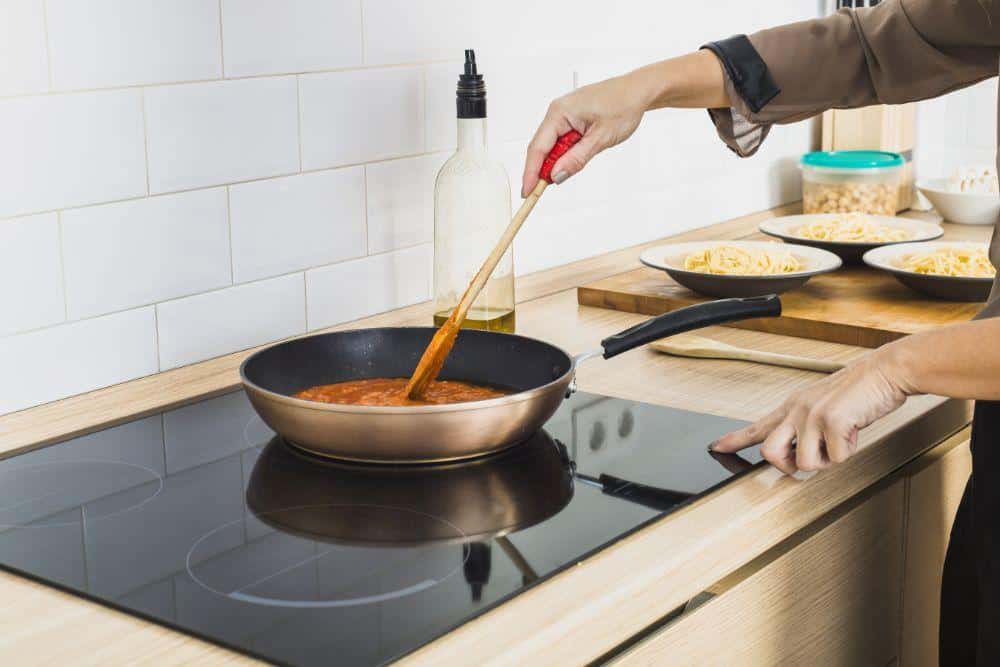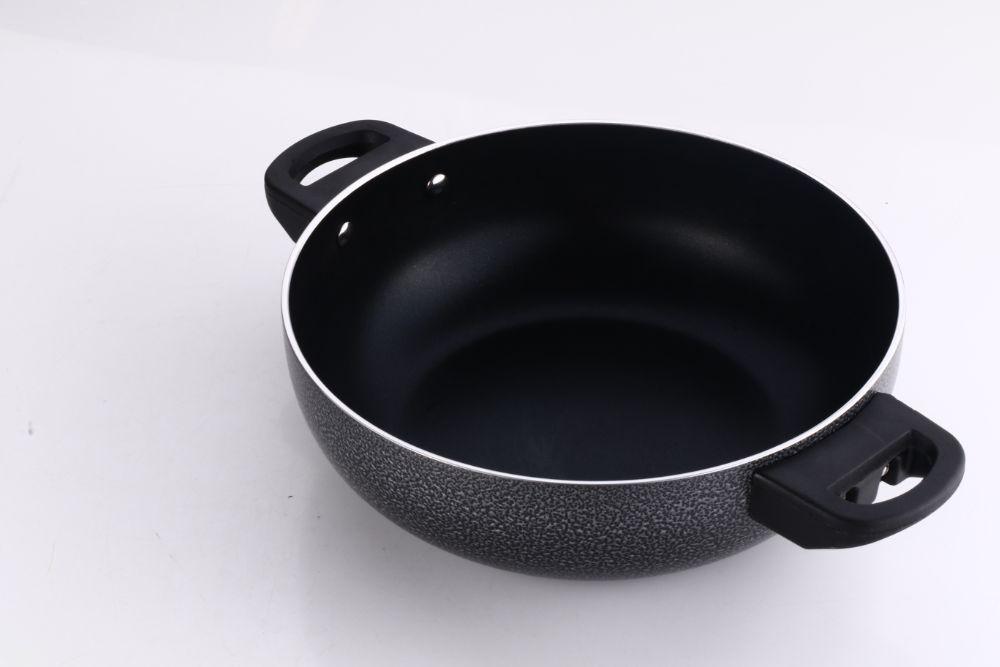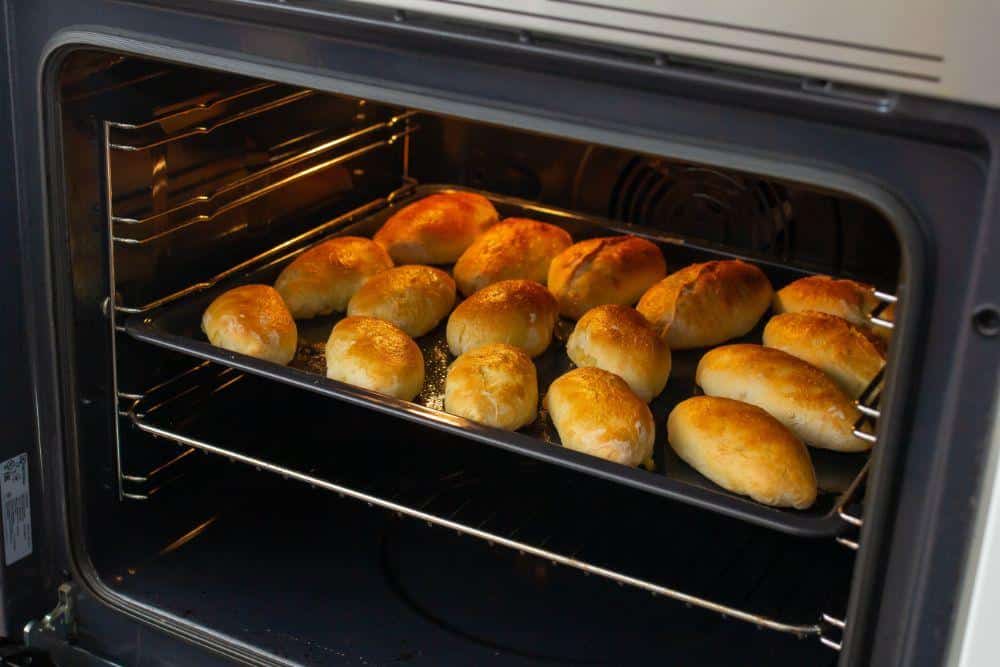You might already know that if you put metal in a microwave, sparks fly and could result in fire. Regular ovens also require caution, but can you put metal in an oven? Will there be problems similar to microwaves or is it alright to do?

While this Frying Pan Might Be Able to Handle the Heat of the Oven, the Plastic Handle Won’t Survive the Oven
The answer is it depends. Some metals have low melting points, like tin at only 450° F (232° C), or other characteristics that can be harmful when placed into an oven. On the other hand, other metals have a much higher melting temperature and are perfectly safe to put in your oven.
This post covers all you need to answer, “Can you put metal in an oven?” We’ll discuss what metals are acceptable to put in an oven, how to ensure safety while doing so, and the main things to watch out for when using metal in an oven.
Most ovens, even simple household ones, can reach temperatures warm enough to melt some metals. But this isn't true for all metals. Most kitchen cookware metals can withstand oven temperatures.
Here is a quick summary of common types of metal and their lowest melting points:
As you can see, unless you are cooking at extreme temperatures, most aluminum, cast iron, and steel (which includes stainless steel) can withstand the usual cooking temperatures.
Tin, lead, and zinc are not as ideal, but thankfully, they also are not used very often in cooking materials. Those can be downright dangerous to cook in high heat and most often these metals are not used in cookware.
Even if the melting point is higher than your desired cook temperature, however, it doesn’t always mean that it is oven safe. There are still many other issues to consider. Let’s dive into those now.
The easiest way to determine if you can put metal in an oven is to check the label or inscription of the metal object you want to use. Most kitchen supplies receive ratings for specific uses. They let you know if they are dishwasher safe, microwave safe, and in some cases, oven safe.
So go ahead and take out that pan or bowl you might use in the oven. Flip it over and see if you can find any information about the device and its acceptable uses. Many oven-safe items are steel, stainless steel cookware, or cast iron objects.
If you can't locate the information on the object, it might help to reach out to the manufacturer to see if they can tell you.
But that isn’t always necessary. If you can determine what your metal is made from and rule out some hidden problems, then it’s likely that your metal object is oven safe.
So, can you put metal in an oven? Most of the time, yes.
It’s worth asking, what should you not put in the oven? If you want to use something in the oven, it’s important to remember that the entire object goes inside the oven. This is different than if you use something on the stovetop as only part of the object is touching the heat.
You need to inspect the pan, bowl, or other metal devices to see if there are any plastic, rubber, or other materials that might melt when placed inside an oven. Most of these have melting temperatures of less than 200° F.
For example, many frying pans have plastic handles or parts used near the handle. These work perfectly well for stovetop use but will melt rapidly inside an oven. The same goes for small rubber parts, like those that cover the feet of some cooling racks, which will be problematic in an oven setting.
A purely stainless steel bowl or pan, made from nothing but stainless steel, will do just fine in an oven. You can likely even use it inside of a toaster oven too. Just remember not to use metal in a microwave oven or convection microwave.
Microwaves use electromagnetic radiation instead of gas, which can reflect off of metal and cause the windows in microwaves to burst. That fact is why you can put metal in an oven but not in a microwave.
Another common issue when using things in the oven is if they are large and might stop airflow. This is especially important when using a convection oven, which uses airflow to provide a more consistent temperature.
Some experts suggest that using large sheets of aluminum foil can be problematic because it will stop airflow. But foil can be used safely in ovens, just as long as it isn’t stopping airflow. Baking sheets are also large but can be safely used in convection ovens.
Finally, another characteristic to consider is non-stick coatings on your metal cookware. In a lot of cases, the non-stick coatings aren’t oven safe. Cookware with non-stick coating that isn’t oven safe shouldn’t be put in the oven at all. Even coatings that are oven safe likely have a melting point - be sure to check your cookware manufacturer’s instructions prior to putting non-stick coatings in the oven.

The Non Stick Coating Along with the Non-Metal Handles Mean That This Saucepan Should Not go in the Oven
Let’s now turn to some of the most common oven-safe materials. You can find these objects in many homes and kitchen supply stores everywhere. You might already have the perfect oven-safe metal cookware in your kitchen.
This is probably fairly obvious, but most ovens and toaster ovens already have metal inside. The metal racks within the ovens on which you usually place your items are made from metal, often steel. And they are designed to be oven safe.
The same is true for other oven cookware, including baking sheets, muffin tins (not made from tin), and pie pans. These are also regularly designed for oven use and are safe in most oven temperatures, even if they have a non-stick coating.

While Most Metal Pans are Oven Safe, be Sure to Check with Your Manufacturer
But now let’s turn to somewhat unconventional cookware that you might be wondering if you can put metal in an oven.
Two other types of oven-safe cookware are 100% stainless steel and cast iron. These items are not only oven safe, but they’ll also maintain a high temperature to cook food without scorching it.
Some stainless steel brands are well-known for their versatility. They can start by preparing a meal on a stovetop, then be thrown into an oven without a problem. Some more technical recipes call for this method of cooking.
Just keep in mind that stainless steel cookware isn’t always oven safe. If it has thin walls or plastic parts, you should reconsider using it in the oven. Thin walls could warp or heat food too quickly, while plastic and rubber parts will melt in oven temperatures.
It’s always best to follow the labels or contact the manufacturer to verify your stainless steel item is oven safe.
Cast iron cookware comes in many options, from small frying pans to giant dutch ovens. Most often, it is made from nothing but cast iron and has a thick base and walls which retain heat well. It is an excellent and often affordable choice.
One thing to keep in mind about cast iron is that it can be heavy. Also, since it retains heat so well, it will continue to cook the food it holds even after being removed from the oven. But well-seasoned cast iron is one type of cookware favored by many chefs.
Can you put metal in an oven? If you have pure stainless steel or cast iron cookware, the answer is likely yes. This is true even for frying pans and other not-so-obvious cookware, as long as they have an oven-safe rating.
